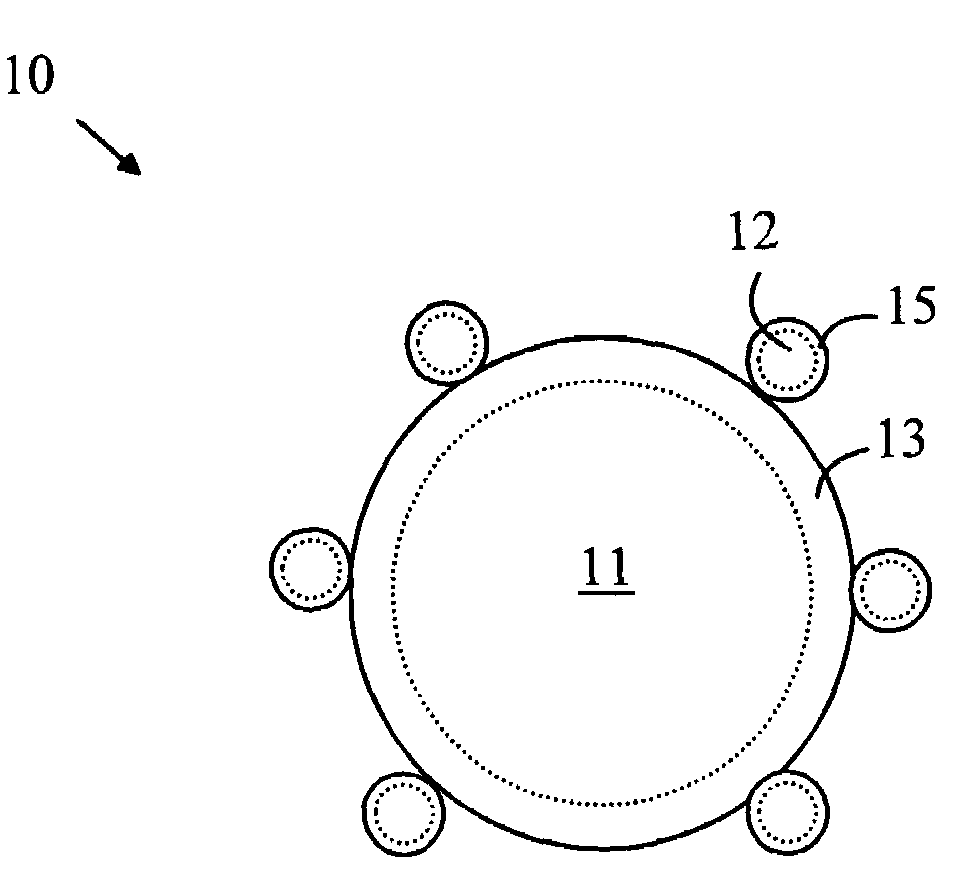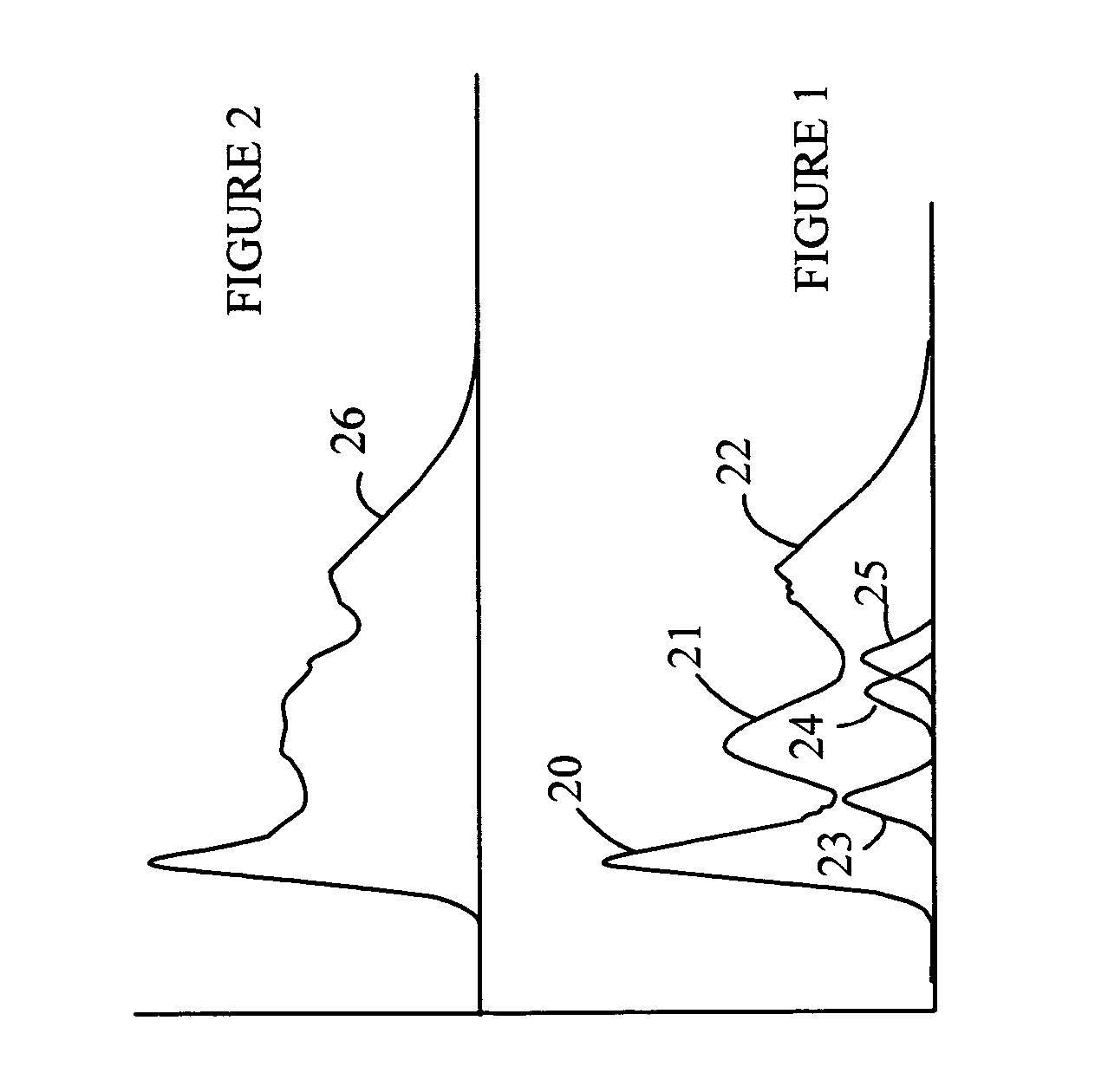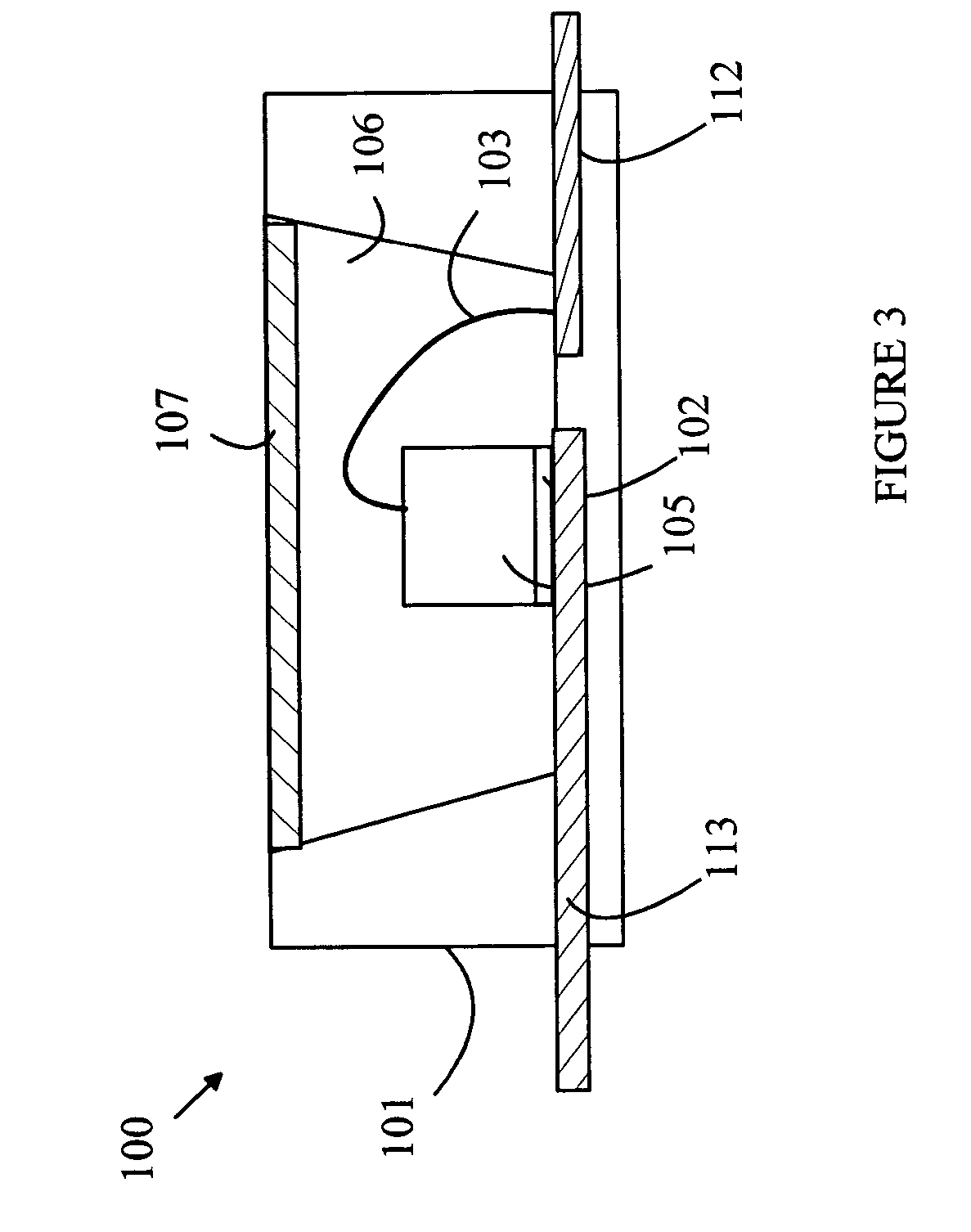Phosphor based on a combination of quantum dot and conventional phosphors
a phosphor and quantum dot technology, applied in the field of phosphor based on a combination of quantum dot and conventional phosphor, can solve the problems of light in a relatively narrow spectral band, markedly different, and the lamp designer does not have an arbitrary set of phosphors
- Summary
- Abstract
- Description
- Claims
- Application Information
AI Technical Summary
Benefits of technology
Problems solved by technology
Method used
Image
Examples
Embodiment Construction
[0012]For the purposes of the present discussion, a conventional phosphor particle is defined to be a particle of a phosphorescent or luminescent material in which the light emitted from the particle when the particle is excited by electromagnetic radiation of the appropriate wavelength has a spectrum that is substantially independent of the particle size, i.e., depends only on the chemical composition of the particle. For the purpose of this discussion, the spectrum will be said to be substantially independent of particle size if the shift in the wavelength of the dominant line in the spectrum in the optical region is less than 30 nm when the particle size is changed from 2 microns to 1 micron. In general, such particles have diameters greater than about one micron for emitted light in the optical portion of the electromagnetic radiation spectrum. A QD phosphor particle, on the other hand, is defined to be a particle of a phosphorescent or luminescent material in which the light em...
PUM
 Login to View More
Login to View More Abstract
Description
Claims
Application Information
 Login to View More
Login to View More - R&D
- Intellectual Property
- Life Sciences
- Materials
- Tech Scout
- Unparalleled Data Quality
- Higher Quality Content
- 60% Fewer Hallucinations
Browse by: Latest US Patents, China's latest patents, Technical Efficacy Thesaurus, Application Domain, Technology Topic, Popular Technical Reports.
© 2025 PatSnap. All rights reserved.Legal|Privacy policy|Modern Slavery Act Transparency Statement|Sitemap|About US| Contact US: help@patsnap.com



